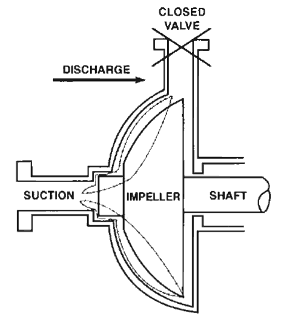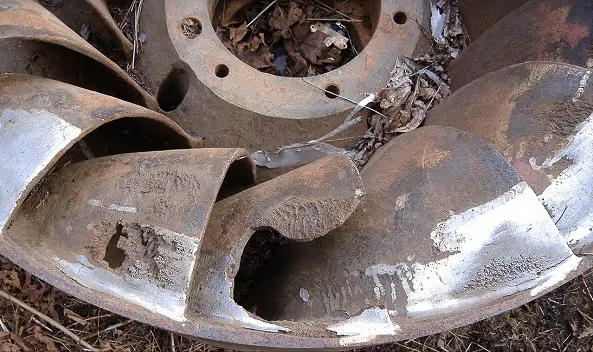 Discharge cavitation occurs when the pump discharge pressure is extremely high or when the discharge flow is restricted and cannot leave the pump (e.g.,, caused by a closed outlet valve). An extremely high discharge pressure results in the majority of the pumped fluid circulating inside the pump.
Discharge cavitation occurs when the pump discharge pressure is extremely high or when the discharge flow is restricted and cannot leave the pump (e.g.,, caused by a closed outlet valve). An extremely high discharge pressure results in the majority of the pumped fluid circulating inside the pump.
This type of cavitation originates from two sources. First, this internal circulation (from high-pressure zones into low-pressure zones) is forced through the clearance between the impeller and the pump housing at high velocity resulting in the formation of a low-pressure region (as a result of Bernoulli’s principle) in which cavitation can occur. Second, the liquid is circulating inside the volute of the pump, and it rapidly overheats.
In both cases, cavitation has similar consequences. The implosion of bubbles triggers intense shockwaves, causing premature wear of the impeller tips and pump housing. In an extreme case, discharge cavitation can cause the impeller shaft to break.
Typical causes of discharge cavitation:
- Pump is running too far left on the pump curve
- Blockage in the pipe on the discharge side
- Clogged filters or strainers
- Inappropriate piping design

https://commons.wikimedia.org/wiki/File:Turbine_Francis_Worn.JPG